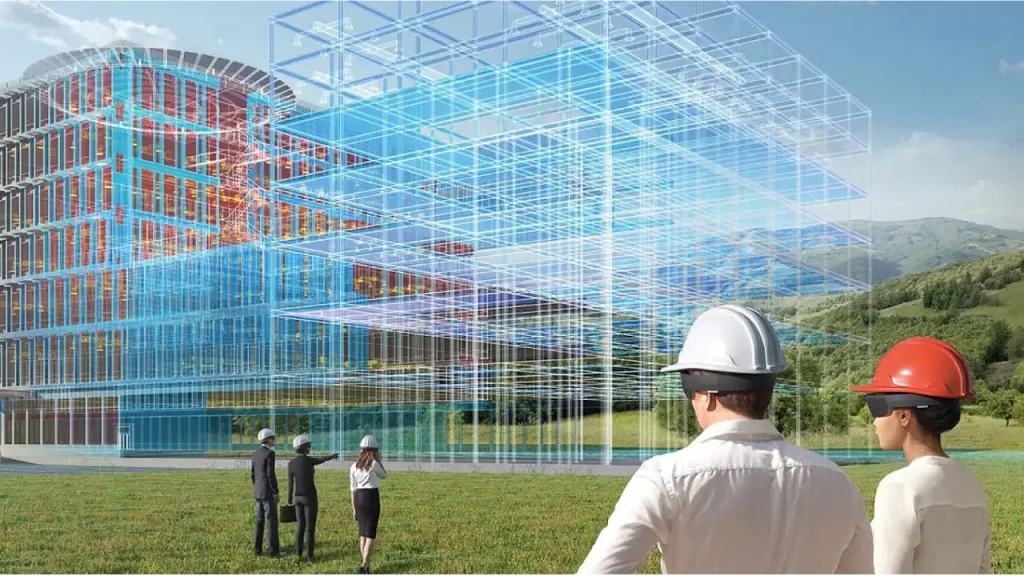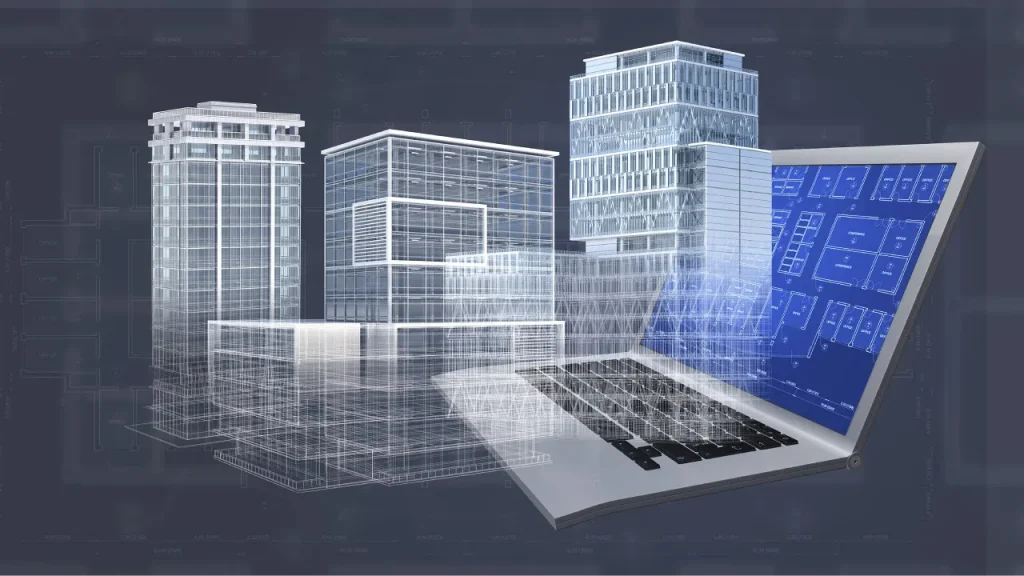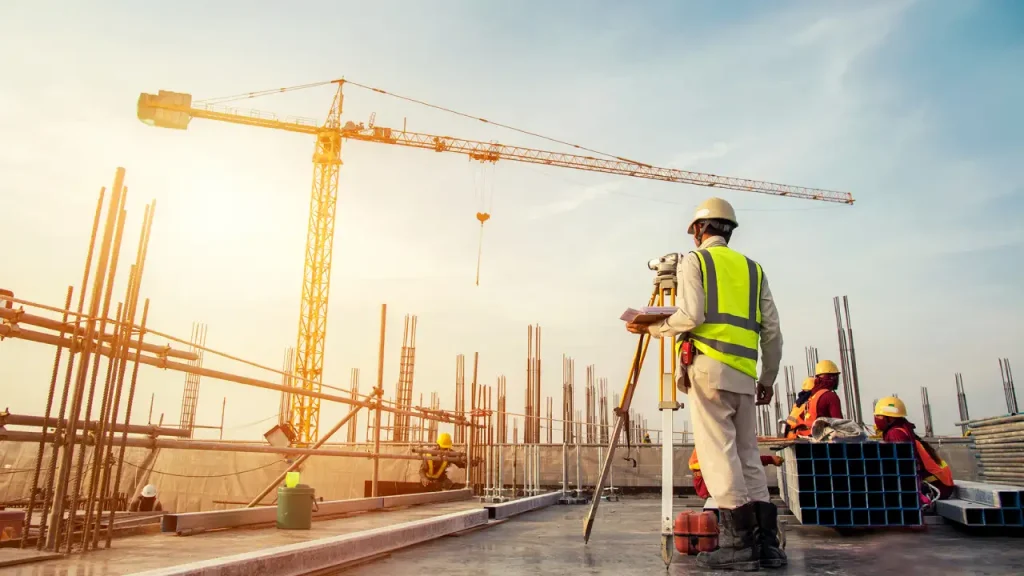Introduction

BIM is a collaborative way of working with a common data environment so it’s easier to share information with everyone who needs it. It enables the digital representation of all building elements and their properties throughout the lifecycle of any construction project. The main aim of BIM is to work together in order to create efficiency savings across the whole lifecycle of any construction project, from conception to completion.
Instantaneous Access
The BIM is a digital representation of the building and all its parts, properties and components. All information about a building’s parts, properties and components are contained in the model so everyone involved can access this information at any time.
In conventional workflow models, data would be sent out to different parties who had to interpret them manually before being able to make decisions regarding their own work. This takes time as they need to interpret what they have received and then make decisions based on that interpretation before sending it back again for further processing or checking by another party. This is where BIM has an advantage over traditional methods: instantaneously accessing data saves time because no interpreting or re-interpreting needs to take place when receiving or sending back information between parties involved in construction projects due to BIM technology being used as opposed to manual processes which require more effort from those involved (particularly those in management roles).
Cost Saving
BIM can save money by reducing the need for rework
Rework is a fact of life when it comes to construction projects, but BIM technology can help you to reduce the amount of time and money spent on fixing errors. When you use BIM, your drawings are updated in real time as changes are made. This makes it easier for everyone involved to stay on the same page—and get to work quickly if there’s an issues with a particular aspect of the design or construction process.
The bottom line is that by using BIM throughout your project, you’re able to avoid all sorts of issues before they become problems down the road, which means that less time is spent backtracking and more energy can be focused on making sure everything goes smoothly from start (design) to finish (delivery).
Collaboration
BIM is a collaborative way of working with a common data environment so it’s easier to share information with everyone who needs it. This can include:
- The architect and consultants who are providing design services for the project (e.g., the builder, structural engineer, landscape architect).
- The constructor who will be executing the construction work on site (e.g., bricklayer or stonemason).
- Operating company that will occupy and maintain the facility after construction is complete (e.g., cleaning crew).
BIM is the future of construction (and therefore, the future of our world).

BIM is the future. It’s a global phenomenon and it will change the way we do business as an industry, both on a local level and on a global one. BIM has become so popular because it allows for greater collaboration between people in different countries; it doesn’t matter where you are in the world, if you have access to BIM software, you can work with others from all over the world to build better buildings and make them more sustainable.
You may be wondering now: “But why should I bother using BIM if it doesn’t affect me? I don’t build skyscrapers or railway stations! Why would this matter to me?” We’re here to tell you that even though BIM won’t directly affect your life (yet), it will definitely change how our society works at large: by making projects more efficient and cost-effective, they’ll take less time than before which means reduced costs of living across board – including housing prices! The more efficient we become as builders today through technological advancements like these, means cheaper cost-of-living tomorrow when those same technologies spread further into other industries as well (such as transportation).
Enter BIM
BIM stands for Building Information Modeling. BIM is a way of digitally capturing, integrating and managing information about a building or infrastructure project. It’s an intelligent way to capture what has been designed, how it will be built and how it will work over its entire life cycle with all key stakeholders involved from different professions working together as part of the same team.
It is not just about digital tools that let you create 3D models; it’s also a collaborative process that facilitates the exchange of information between all project stakeholders including designers, engineers, architects, owners and operators throughout the design/build process. This enables them to better understand each other’s requirements early on in the process so they can collaborate more effectively to produce integrated designs which improve quality control and reduce disputes on site – resulting in cost savings right through construction phase right through until when you sell your property after completion!
How does BIM work?
Building Information Modeling (BIM) is a 3D model of the building that contains all information about the building’s parts and properties. Creating a BIM model in a collaborative way means all team members are contributing to the same, up-to-date version of their designs. This allows everyone involved in a project to see what everyone else is doing and how their work affects other areas of the project.
Collaborative modelling helps you:
- Share information with everyone who needs it
- Reduce errors through better communication between teams and disciplines
Why use BIM?
BIM is a collaborative way of working with a common data environment. It enables architects, engineers, contractors and suppliers to work together in the same virtual space.
The whole industry benefits from this approach because it enables them to deliver better built assets through improved collaboration across the industry.
It allows for better quality, efficiency and cost savings due to:
- Better communication between all stakeholders at every stage of design and construction
- Reduced risk through early identification of potential issues in a design before they become costly problems on site
- Improved safety through increased awareness of hazards by more informed people
BIM can save money.
BIM can help you to save money by reducing errors, mistakes and rework.
- Reduced errors in the design process prevent reworking of designs and parts which results in savings on construction costs. It also saves time as there is more accuracy in drawings which means less time needs to be spent checking them before they are passed on.
- Automated data management reduces the need for manual data entry and manual checking of drawings, again saving costs associated with labour that would otherwise have been wasted on this process.
With BIM software, you can create a digital product model for a building that contains all information about the building’s parts and properties.
BIM – Building Information Modeling (BIM) is a digital product model. It is a 3D model that also contains data like building information, cost and other details. As you can see in the image below, the BIM model contains information about different objects such as walls, windows, doors etc. The database can be used to create an intelligent building by integrating all aspects of it into one unified system.
It is important to understand what BIM actually means because it has been around for some time now but still seems to cause confusion due to its jargonistic nature and many different interpretations by various industries worldwide!
BIM consists of a combination of services including software development, implementation support and training, consulting support for BIM adoption, custom data modelling and project based modelling services.
It consists of a combination of services including software development, implementation support and training, consulting support for BIM adoption, custom data modelling and project based modelling services.
BIM can be used in all phases of the construction process. However it is most useful during the schematic design phase where it can be used to help define building elements such as walls and roofs. At this stage you may also want to consider using AutoCAD to create 2D drawings or 3D models using Revit software (or other BIM applications) so that they can be used as part of your proposal package when tendering with clients or customers or during early stages of the pre-construction process before any design work has been carried out by consultants.
The BIM provides an opportunity for collaboration between people working on different aspects of projects at different locations which means there’s less chance for errors between individuals working together online which will help save time on site too!
BIM means a collaborative way of working with a common data environment so it’s easier to share information with everyone who needs it.
BIM means a collaborative way of working with a common data environment so it’s easier to share information with everyone who needs it. This makes it easier to understand the impact of changes to the design, or changes in construction.
BIM is important because it saves time and money right through the project lifecycle. BIM also gives you more control over your assets.
The main aim of BIM is to work together in order to create efficiency savings across the whole lifecycle of any construction project.
The main aim of BIM is to work together in order to create efficiency savings across the whole lifecycle of any construction project. Unlike the traditional way of working, which is based on a linear process concentrating on tasks at hand, BIM embraces change and adapts as and when needed.
The benefits of this method become apparent when moving from concept design through to detailed design and finally construction – with information being shared throughout every step along the way. This helps avoid mistakes being made at a later stage due to lack of information or understanding, increasing efficiency by reducing rework costs.
It also allows for better decision making based on data collected from multiple sources including surveys, CAD drawings etc., resulting in informed decisions without having to rely on guesswork or gut instinct alone (something which can often lead people down wrong paths).
Ultimately, BIM is about better delivery of better built assets through improved collaboration across the industry.
Ultimately, BIM is about better delivery of better built assets through improved collaboration across the industry. It’s a way to work together that drives efficiencies, reduces waste and ultimately improves the quality of our built environment.
The more we can share our ideas, designs and constructions information before any physical building takes place then the more efficient our whole lifecycle becomes.
Do you know what’s the benefits of BIM? Click here to read.
Conclusion
As an industry, we need to embrace BIM and be proactive in our adoption of it. We can no longer afford to delay the implementation of BIM in our design and construction processes; there is too much at stake. The future will only get brighter for those who have adopted BIM early on, but those who continue to ignore this technology will continue working with outdated processes until they are forced into innovation by market forces or even worse – their competitors.
Follow us to stay updated on LinkedIn, Facebook, Instagram and Twitter.



